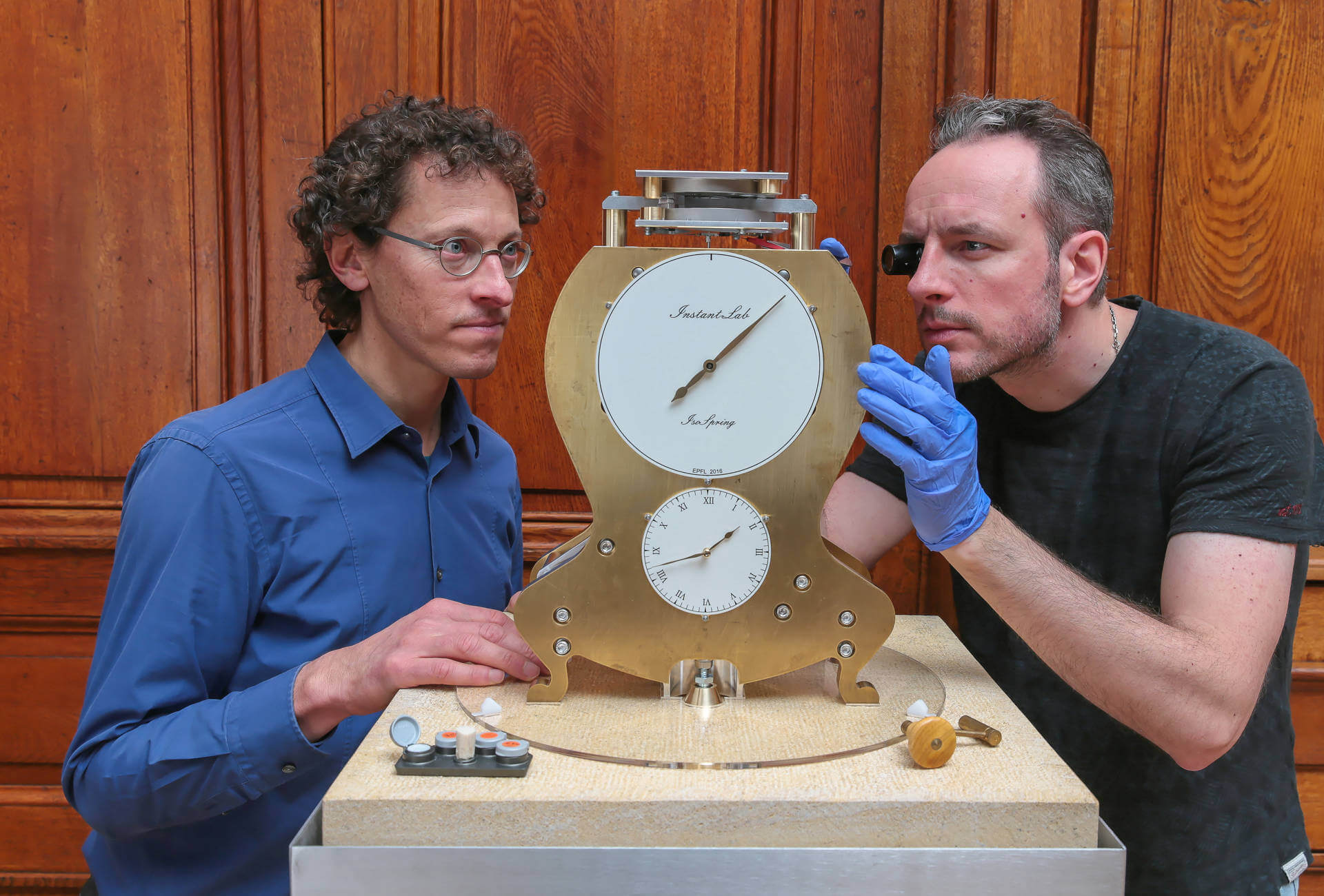The newly renovated Neuchâtel town hall is home to two highly interesting clocks outside the assembly hall on its first floor. One is a historic master clock by Matthias Hipp (1813-1893) that was installed there in 1876 to regulate all public clocks in the town. It’s an enormous pendulum clock, locked in a cupboard with glass doors. It is wound electrically at regular intervals and is further equipped with a complicated device that generates an electric impulse every minute. Hipp had come from Germany and settled in Neuchâtel to set up his workshop. Thanks to his many inventions relating to electricity, he is often referred to as the “Swiss Edison”.
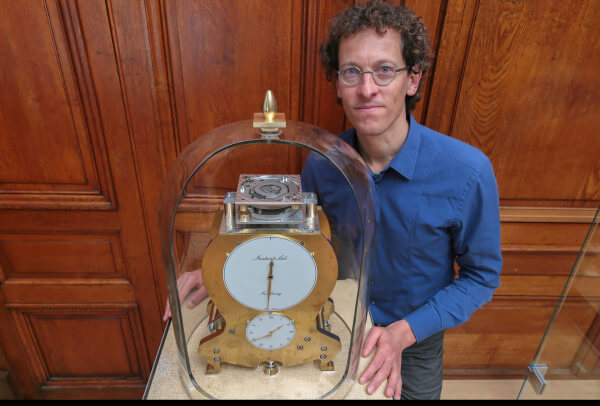
A flexible bearing system
Opposite this imposing clock stands a glass shrine that holds a somewhat smaller clock in the guise of a traditional “Neuchâteloise”. Unlike its model, this clock is made of heavy brass and steel, and is driven by a substantial weight that hangs underneath the massive granite slab on which the clock stands, giving vibrations no chance. Its main dial only sports a long seconds hand that does its rounds without a quiver, calmly and evenly. A smaller dial with hours and minutes is located underneath, being of relatively minor importance.

But the most remarkable feature is situated on top of this strange clock. It’s a round device whose hypnotic movements are hard to describe, given that they are circular without actually revolving. Not unlike someone moving their hips in a circle to keep a hula-hoop spinning round their waist. The continually moving device is machined out of a single block of very elastic steel and is kept together by very thin blade springs. They give the outermost part freedom to move in two directions at right angles to each other. If these two vectors are combined, the result is an ellipse or a circle. This freedom to move in any direction that lies in one plane is called isotropism, hence why the system invented by Professor Simon Henein with a team of ten engineers at EPFL’s InstantLab in Neuchâtel is named the IsoSpring.
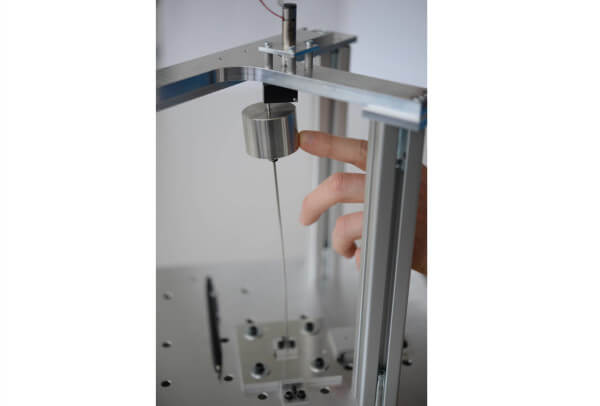
The material properties and the thickness of the springs are chosen so that they oscillate at a given frequency regardless of the impulse’s energy, like a balance wheel, thus isochronal. The block of metal that constitutes IsoSpring is a flexible bearing. It combines the functions of articulation and flexibility in a single element that was machined from one block. It therefore has no hinges and does not need oiling. Elements like these could be seen more and more in the horology of the future. One example is the single element that Patek Philippe uses as a combination of spring and lever in its latest Aquanaut Traveltime Ref 5650.
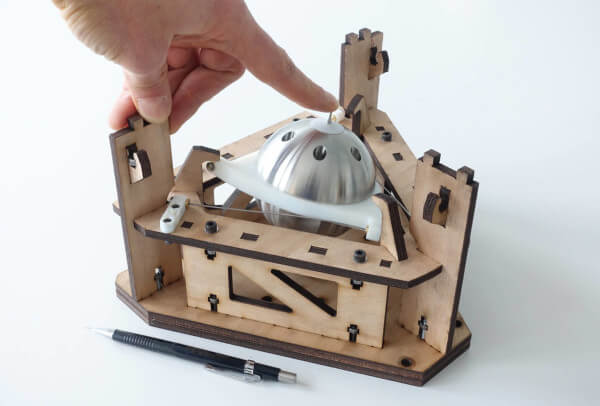
Will it work in a watch?
In order to keep the circular oscillations going, something has to connect the gear train that moves the clock’s hands and IsoSpring. Surprisingly, there is nothing so complicated as a traditional escapement, in fact the solution looks rather simple: it is a slotted lever that carries thin pin which in turn is fixed to the oscillating part of IsoSpring. Since IsoSpring moves in a horizontal plane, the axis of the lever needs to be vertical. As the lever turns in a perfect circle, it carries the pin which, thanks to the slot, is free to perform any size and shape of circular movement that is possible within the range of the length of the slot and the limitations of IsoSpring. If the energy supply is low, the resulting ellipse or circle will be small; if, on the other hand, there is a lot of energy, IsoSpring will follow a larger path. Thanks to its isochronal qualities, the speed will be constant at all times. “In fact its maximum daily deviation is one second,” says Professor Henein.
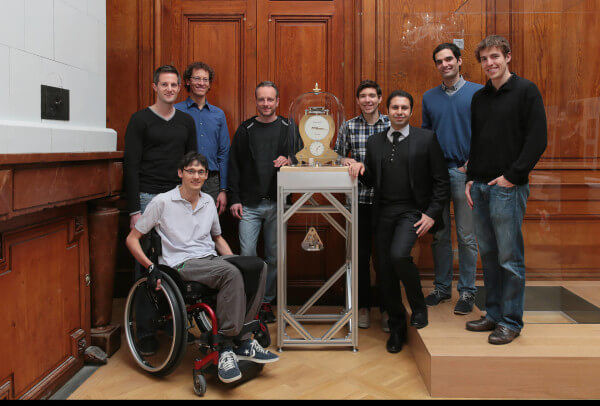
Watching the hypnotic movements of the IsoSpring regulator, the question that immediately springs to mind is whether this system might ever work in a wristwatch. It seems improbable, as the clock it regulates has to be protected from shocks, and needs to be in a perfectly horizontal position. “Of course we have taken that into consideration,” says Henein with a broad grin. “We are already working on a version that isn’t affected by position.” He goes on to show an arrangement that features a metal sphere as an oscillator. It is supported by three elastic elements around its equator and has a pin sticking out of its upper pole. “You see, if I give this pin a push, the sphere moves around its centre of gravity, making the tip of the pin perform an ellipse. Gravity or the orientation of the arrangement does not influence the way the sphere oscillates. All we have to do now is make it smaller.” New materials and methods such as silicon and LIGA will very probably play an important role when miniaturizing IsoSpring. Finding a watch manufacturer that might be interested shouldn’t pose a problem: EPFL is supported by groups and watch brands such as Richemont, Rolex and Patek Philippe. Moreover Simon Henein is the current incumbent of the Patek Philippe chair at EPFL.








